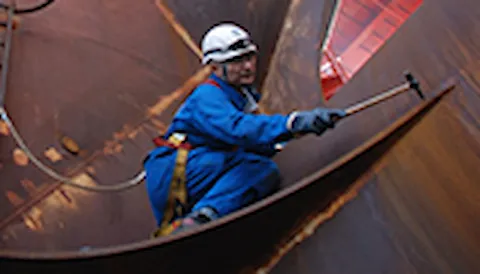Emission dispersion modelling for licensing and spatial planning
DNV’s air quality and nitrogen deposition modelling services help you assess emissions reduction programmes to meet regulations and optimise expenditure
DNV’s air quality modelling services help you assess the impact of emissions reduction programmes and fine-tune your emissions profile. For spatial planning and infrastructure projects such as roads, waterways and harbours, we help you determine the impact on air quality and acid deposition – enabling you to select the best options for public health and cost-effectiveness. We also work with operators of combustion installations and industrial facilities.
Balancing business and environmental needs
Even below the legal limits, air pollution can have health and environmental effects. And in some cases, there is pressure to reduce emissions even further – often beyond what is required by regulation.
However, emission reduction techniques often use large amounts of materials and energy, and require large initial investments. We allow you to understand the effect of any proposed mitigation measures, and we help you avoid unnecessary expenditure while ensuring you meet air quality regulations and targets.
- Gain insight into which sources are major and minor polluters
- Target mitigation measures and investments where they will do most good
- Use data to argue against government-imposed emission reduction measures where they are predicted to be ineffective
- Avoid the need to purchase expensive measurement equipment, with potential savings in the millions
- Minimise risk of your license to operate being refused
- Clarify the impact of local traffic (ships, urban streets, highways)
- Identify odour sources and reduce odour nuisance
- Identify lowest acidification (NOx, SO2, Cl, F) impact due to emissions to air.
Advanced models for complex situations
In particularly complex situations, DNV uses the advanced model STACKS+ to give realistic impact assessments. This is a unique approach that goes beyond any others available. It ensures accurate air pollution estimates, leading to more efficient emission reduction measures that deliver the desired environmental improvement.
Our advanced atmospheric dispersion models allows the air quality consequences of industrial activities, road traffic, shipping, air traffic and other relevant sources to be calculated and presented in an insightful manner.
In particular, the models convert the data on emissions into concentration levels and deposition quantities. They are used extensively to calculate and determine:
- NO2 and fine particulate (PM10, PM2.5, elementary carbon) concentrations along traffic routes for testing against air quality
- emissions of NO2, PM10 and many other pollutants (e.g. odour) from industrial activities (including power plants) as required for environmental permits
- the impact of emission control measures and strategies
- nitrogen deposition (NOx and NH3) in nature reserves due to emissions from road traffic, industry and agriculture
- hourly and instantaneous odour concentrations (expressed as percentile values) for assessment of local nuisance complaints




